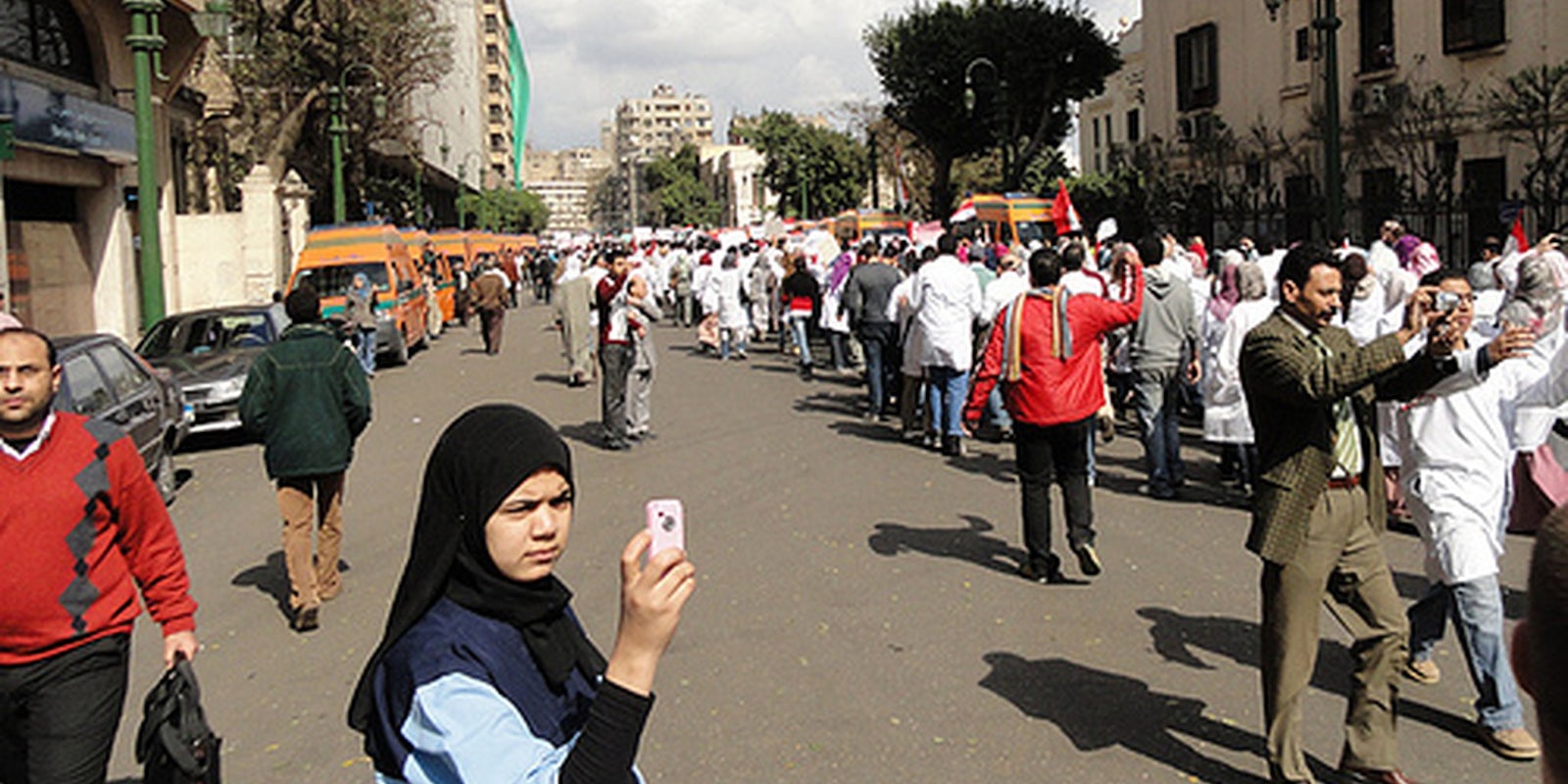During the 2011 Egyptian revolution, millions of people used Twitter to coordinate protests and tell the world about the uprising. Some people even risked their lives for the sake of a tweet, defiantly standing in the middle of a crowded street to capture a photo.
Unfortunately, many of those historic pictures have disappeared.
Between Jan. 20, 2011 and March 1, 2011, more than 580 photos and videos included in tweets were corrupted, lost, or deleted, reported a new study from Hany SalahEldeen Khalil, a doctoral student at Old Dominion University.
“After only one year more than 10 percent of the media that we thought we have stored for future generations was gone,” Khalil wrote. “If the decay continued at the same rate and if we didn’t do anything to preserve this digital heritage of the revolution in less than 10 years there will be no story to tell for the future generations and we will lose these magnificent collections that can show what thousands of books couldn’t convey.”
Khalil and his research group analyzed three different Storify threads, two websites, and an ebook containing embedded tweets featuring images and videos.
In the case of Storify—a social media tool that allows users to organize tweets, videos, and photos—the group analyzed each thread three different times over three weeks and found that 10.8 percent of the videos, photos, and links were missing.
The same held true for IamJan25.com, a website that collects videos and photos from the revolution, where 10.5 percent of its content was corrupted. Website 1000Memories.com/egypt, which allowed families to post photos and videos their dead loved ones, has been unavailable since sometime between July 18 and January 2012, reported the study.
The ebook Tweets from Tahrir not only contained a fair amount of typos, but it was missing 30.4 percent of its images, Khalil wrote.
“Something worth noting is that while analyzing all the images in the tweets in the book we came across of a certain image and upon reproducing it using the link in the tweet it gave a totally unexpected result for an image of Miley Cyrus,” he wrote. “After investigating further it turned out to be that there was a typo in the book in this tweet which lead to this unexpected result.”
There is no definitive explanation for where this content has gone, but there are some theories, Khalil wrote:
“This loss of the resource, let’s say for example a video, could be caused by the owner deleting this video, the owner being banned or removed, the owner’s subscription is finished, or even the publishing facility is completely down (for example, YouTube shutting down).”
Almost the same thing goes for a tweet, unless that message is retweeted by another user.
While Twitter may be recording experiences around the world by the second. But it’s clear that the social platform, and image applications like yfrog, have a long way to go to make sure that history is not lost.
Photo by sierragoddess


